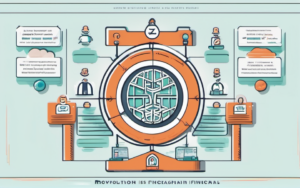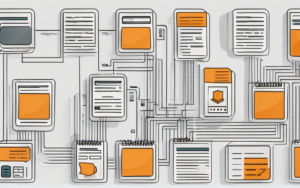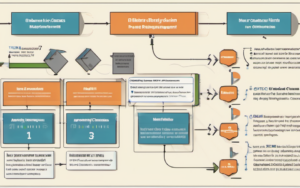Blockchain technology has emerged as a powerful tool for combating fraud across various industries. This revolutionary technology offers a secure and transparent platform for recording and verifying transactions, making it difficult for fraudulent activities to occur.
Blockchain: A Powerful Tool Against Fraud
What is Blockchain?
Imagine a digital ledger that records every transaction in a decentralized and immutable manner. This is the essence of blockchain. It’s a distributed database where information is stored in blocks, linked together in a chronological chain. Each block is secured with cryptography, ensuring the integrity and immutability of the data.
Key Features of Blockchain for Fraud Prevention
Blockchain’s decentralized nature, immutability, and transparency make it an effective tool against fraud. With blockchain, every transaction is recorded on a public ledger, accessible to all participants. This eliminates the possibility of altering or manipulating data, making it difficult for fraudsters to operate.
Blockchain in Finance
Combating Financial Crimes
Financial institutions are increasingly using blockchain to combat money laundering and other financial crimes. Blockchain’s transparent and auditable nature allows for the tracking of transactions and identification of suspicious activities.
Securing Transactions
Blockchain provides a secure platform for financial transactions, eliminating the need for intermediaries and reducing the risk of fraud. Smart contracts, automated agreements encoded on the blockchain, ensure that transactions are executed only when specific conditions are met.
Improving Transparency and Auditability
Blockchain enhances transparency and auditability in the financial sector. Every transaction is recorded on the blockchain, making it easier for regulators and auditors to track and monitor financial activities.
Blockchain in Healthcare
Protecting Patient Data
Blockchain can help secure patient data and prevent unauthorized access. By storing medical records on a secure blockchain platform, healthcare providers can ensure patient privacy and confidentiality.
Preventing Medical Fraud
Blockchain can be used to track medical claims and identify potential fraud. By recording all medical transactions on a secure ledger, healthcare providers can prevent fraudulent billing and claims.
Streamlining Supply Chain Management
Blockchain can improve the efficiency and transparency of the healthcare supply chain. By tracking the movement of medical supplies from manufacturers to hospitals, blockchain can help reduce counterfeiting and ensure the authenticity of medications.
Blockchain in Supply Chain Management
Tracking Products and Materials
Blockchain allows for real-time tracking of products and materials throughout the supply chain. This provides greater visibility and control, reducing the risk of fraud and counterfeiting.
Ensuring Authenticity and Origin
By recording the origin and provenance of products on the blockchain, companies can ensure their authenticity and prevent the sale of counterfeit goods.
Reducing Counterfeiting
Blockchain can help combat counterfeiting by providing a secure and transparent platform for tracking products and materials. This allows consumers to verify the authenticity of the products they purchase.
Blockchain in Voting
Securing Elections
Blockchain can be used to secure elections by providing a tamper-proof record of votes. Each vote is recorded on the blockchain, making it impossible to alter or manipulate the results.
Eliminating Tampering
The decentralized and immutable nature of blockchain eliminates the possibility of tampering with votes. This ensures fair and transparent elections.
Increasing Voter Confidence
By providing a secure and transparent voting system, blockchain can increase voter confidence and trust in the electoral process.
Challenges and Future of Blockchain in Fraud Prevention
Scalability and Performance
Blockchain technology still faces challenges in terms of scalability and performance. As the number of transactions increases, the network can become congested, impacting transaction speed and efficiency.
Regulatory Landscape
The regulatory landscape surrounding blockchain technology is still evolving. Clear regulations and guidelines are needed to ensure the responsible adoption and use of blockchain for fraud prevention.
Adoption and Integration
The widespread adoption and integration of blockchain technology across industries require collaboration and investment. Businesses need to invest in the necessary infrastructure and expertise to implement blockchain solutions.
Blockchain’s potential to revolutionize fraud prevention is immense. By providing a secure, transparent, and auditable platform for recording transactions, blockchain can help combat fraud in various industries. As the technology continues to evolve and mature, we can expect to see even more innovative applications of blockchain for fraud prevention.
The future of blockchain in combating fraud is promising. As businesses and governments embrace this technology, we can expect to see a significant reduction in fraudulent activities and a more secure and transparent global economy.




